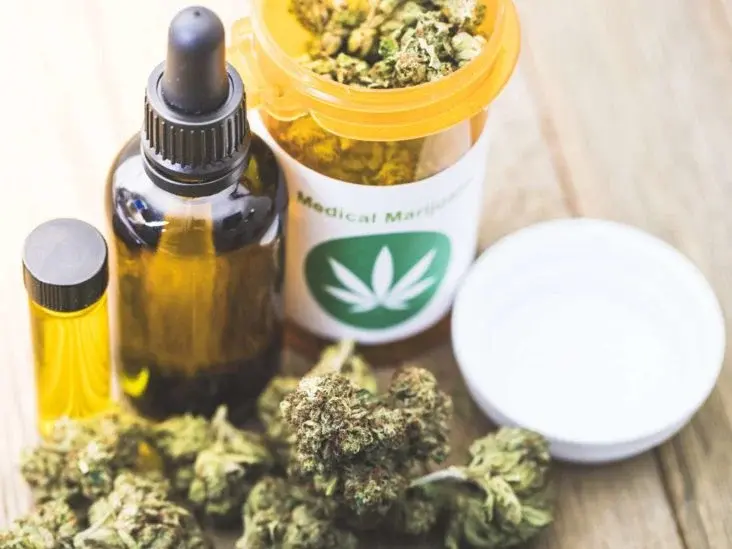Pain management is an area where medical marijuana is becoming more prevalent. Its relative safety profile and a growing body of evidence have led to a shift in attitudes towards its use.
Research has demonstrated that various compounds in the Cannabis sativa plant can help relieve pain. These include tetrahydrocannabinol (THC) and cannabidiol (CBD). These compounds can be administered through the mouth or eyes or absorbed through the skin.
Medicinal Marijuana
The pain-relieving properties of medicinal marijuana are well-known, and many people use it for chronic conditions that cause pain, such as multiple sclerosis, nerve pain in the legs and arms, arthritis, fibromyalgia, and sleep apnea. Some studies have shown that marijuana reduces pain and improves the quality of life in patients with inflammatory conditions, such as rheumatoid arthritis, interstitial cystitis, and endometriosis.
However, many doctors are reluctant to prescribe it as a treatment for their patients. This is mainly because they cannot access unbiased medical information about this drug.
Another concern is that patients do not always respond to the medication. Many of these patients do not experience a significant improvement in their condition, which can lead to disappointment and frustration. Some of them may also become dependent on marijuana, which can make it difficult to discontinue the drug.
Despite the limitations, many studies support the effectiveness of medicinal marijuana in pain management.
Medical Marijuana Dispensaries
A medical marijuana dispensary is where a person can procure cannabis for their illness. Unlike recreational marijuana outlets, these establishments are regulated and must follow state laws. They are also typically geared towards providing patients with information about their specific ailments and the cannabis that is best suited for them. In most cases, they are designed with an interior closer to a doctor’s office than a traditional storefront.
Those who wish to purchase at medical marijuana dispensaries in Utah will need a doctor’s certification and a valid ID card. They must also visit the dispensary every year to maintain their eligibility. The yearly visits will evaluate the patient’s pain relief, use of opioids for pain management, and overall quality of life.
Marijuana is an herbal plant used for medicinal purposes for more than 3,000 years. It is believed to work by acting on the body’s end cannabinoid system, helping to relieve pain and anxiety and other symptoms, such as nausea, loss of appetite, muscle stiffness, and spasticity. Recently, it has become increasingly popular as a natural alternative to prescription drugs. Rising opioid-related mortality and morbidity rates have led doctors to recommend cannabis as a safer option. This has led to the proliferation of cannabis-based dispensaries across the country.
Medical Marijuana Counseling
In states where medical marijuana is legal, counselors may see clients seeking symptom relief.
Many people who seek out medical marijuana are using it as a way to substitute other drugs for pain management. Traditional pain medications, such as opioids and benzodiazepines, have numerous unwanted side effects. People who switch to cannabis often can significantly reduce the amount of other drugs they take.
The benefits of medicinal marijuana are based on the body’s natural chemicals that help regulate functions such as appetite, movement, and memory. These chemicals are called endocannabinoids. Medicinal marijuana contains compounds that mimic the body’s endocannabinoids, allowing them to have therapeutic effects. These effects include decreasing chronic pain, nausea, and vomiting due to chemotherapy and other treatments and spasticity (tight or stiff muscles) in people with multiple sclerosis.
Most people using medicinal marijuana are doing so on the advice or consent of their doctors to relieve specific symptoms of AIDS, cancer, multiple sclerosis, and other debilitating conditions. It is essential to distinguish this from recreational marijuana users, who consume it to get high.
Medical Marijuana Research
Researchers seeking to understand the medical effects of cannabis have had to navigate a complex process involving multiple federal agencies. To research a drug, scientists must obtain a Food and Drug Administration permit while adhering to state regulations. Additionally, they must meet the requirements set forth by the National Institute of Drug Abuse and the DEA.
Recent scientific studies, including randomized controlled trials, have found that medicinal cannabis effectively treats chronic pain and improves quality of life. These findings indicate that cannabis is an alternative to prescription medications, which often have serious side effects, including addiction and dependence.
Some people seek out medicinal marijuana in addition to their prescribed medicines, a practice generally considered safe by physicians. However, it is essential to note that current regulations make it difficult for physicians to prescribe medicinal marijuana to patients.
It is also essential to consider that the long-term effects of medicinal cannabis are not yet well understood, and potential drug-drug interactions must be considered. Furthermore, the best doses and methods of use for different types of pain remain to be determined.
If you are constantly dealing with pain, it is crucial to seek out the expertise of a qualified pain specialist.









Hello!! My name is Annabella
I love to eat, travel, and eat some more! I am married to the man of my dreams and have a beautiful little girl whose smiles can brighten anyone’s day!